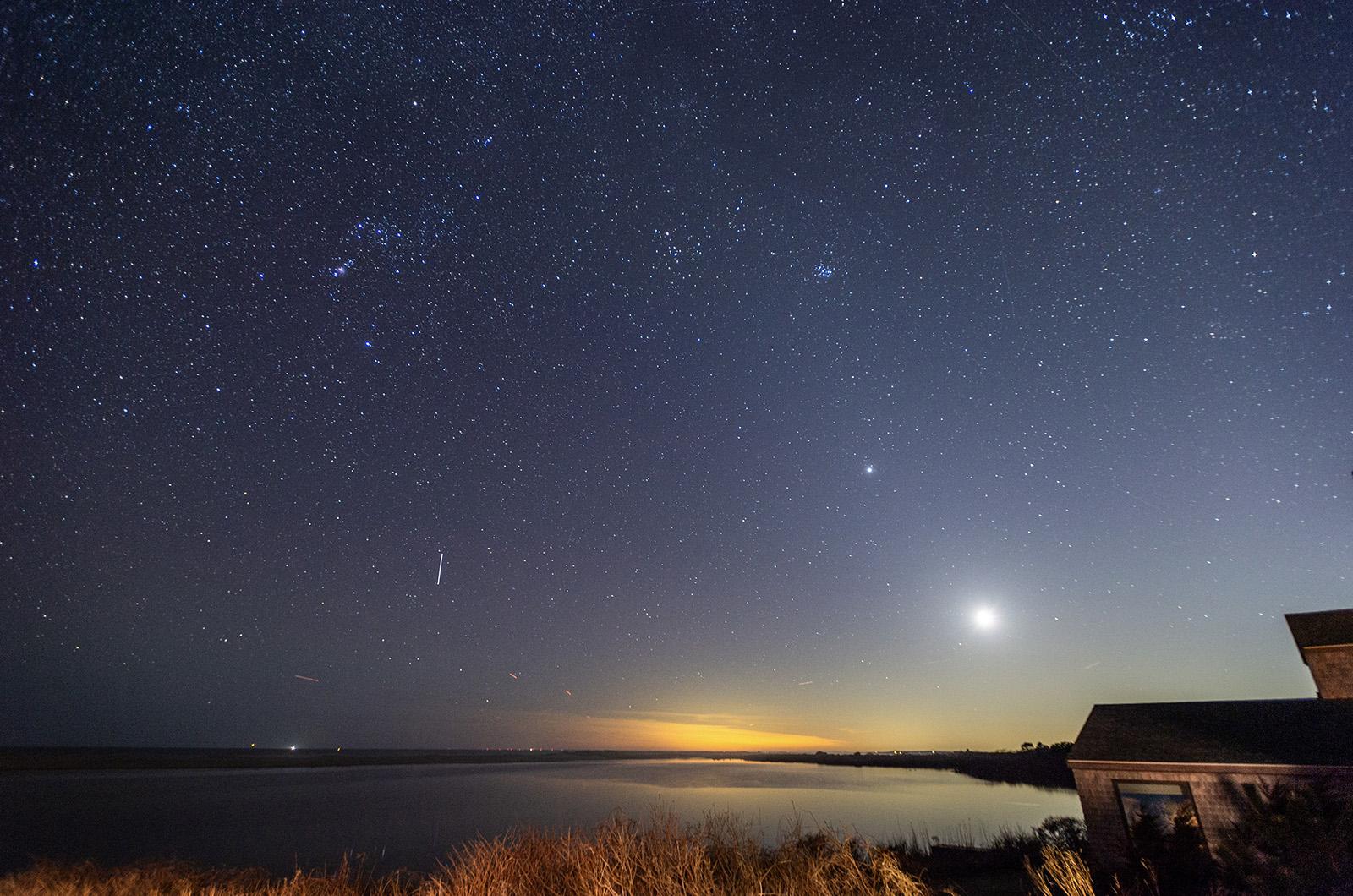Better the devil you know than the devil you don’t.
So say sky watchers who are enjoying the appearance of a cosmic comet. Known officially as 12P/Pons-Brooks and colloquially as the Devil’s comet, this intermittent ice, rock and gas bag will be showing itself this and next month.
Astronomers speak of the devil in glowing terms, excited by its once in a lifetime-ish occurrence (elders may argue that designation). A periodic comet, one can see 12P/Pons-Brooks only every 71.3 years, so it was back in 1954 that this sky flyer was last observed. The next time will be at the end of this century.
This comet was first described by self-taught French astronomer Jean-Louis Pons in 1812. Due to its elusive and episodic nature, British-born American William Roberts Brooks (notable as the second most prolific comet finder — we’ve already mentioned the first) is also credited with its discovery (or rediscovery) in 1883 when the comet came back around on its orbit.
Interestingly, neither of these two men would have called it Devils comet, since in their times it lacked the devil’s horns that led to this more recent name.
Comets are made of frozen dust, ice, elements and rocks, likely the remnants from our solar system’s formation. In this recent orbital visit, as the 12P/Pons-Brooks neared the sun, its heat warmed up the comet’s materials, causing surficial outbursts and eruptions. These flare-ups created the horn-like projections of gases, vapors and other comet-components that led to its recent demon designation. Star Wars fans have their own name for this comet, christening it the Millennium Falcon Comet as a paean to Han Solo’s famed spacecraft, which it resembles.
The devil is in the details, if you want to observe its stellar sorcery. Moving through the constellations of Pisces and Aries during the last 10 days of March, lucky lookers might be able to find this comet low in the western sky after sunset. Binoculars or telescopes will be helpful for best observation, though it might be possible to see with naked eye.
Another visual opportunity comes on April 8 during the solar eclipse when the comet will be photo-bombing the main event. Off to the side, at 25 degrees from the sun, one might be able to see the comet during the four-and-a-half-minute solar eclipse as the sky darkens. Of course, there are no guaranties and, remember, it is never a good idea to look directly at a solar eclipse without eye protection.
Humans have a devil-may-care attitude when it comes to this comet. While it is a large one, at 10 miles across, it is not expected to cause any damage to our planet. Larger than Halley’s Comet and even bigger than the asteroid that purportedly wiped out the dinosaurs, it is orbiting far enough out, at 144 million miles, to maintain a safe distance from our home planet.
Most of us won’t be around for the next observation opportunity of this galactic giant, so consider this orbital opportunity as your first and likely last call for a date with the devil.
Suzan Bellincampi is director of the Felix Neck Wildlife Sanctuary in Edgartown, and author of Martha’s Vineyard: A Field Guide to Island Nature and The Nature of Martha’s Vineyard.




Comments
Comment policy »